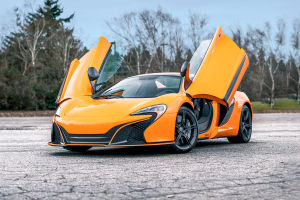In the automotive industry, the exterior design of a car holds immense importance, especially in attracting consumers unfamiliar with the model.
A captivating appearance can spark consumer interest, prompting them to delve deeper into learning about the vehicle.
Hence, the development of a car's exterior design is pivotal to its overall success. While some may view car design merely as drawing a picture, it entails far more complexity and requires a diverse range of knowledge and skills. Today, we'll explore the key considerations and challenges involved in designing a car's appearance.
Brand image is a central factor in the design process. It refers to the personality traits associated with a brand in the market and the public's perception. For instance, when people think of Mercedes-Benz, they envision luxury; BMW evokes thoughts of sportiness, while Audi is synonymous with technology and sophistication. Consequently, in crafting the exterior design of a model, designers must skillfully incorporate elements such as curved surfaces, lines, light, and shadow to align with the brand's image. Deviating from the brand's established image can significantly impact car sales. If a Mercedes-Benz model fails to exude luxury, consumers may lose interest, undermining the brand's reputation and sales potential.
When designing a global model, designers face the challenge of appealing to diverse consumer preferences across different regions. Cultural variations result in varying aesthetic tastes among consumers worldwide. Achieving a balance between these diverse preferences while meeting market demands is a formidable task. The success of a car model in one country does not guarantee similar success elsewhere. For models targeted at specific countries or regions, designers must incorporate local market trends, national characteristics, and regional preferences into the design. Adapting to these nuances ensures that the vehicle resonates with consumers and captures their attention in a competitive market landscape.
Each automotive brand possesses its unique brand identity, which must be preserved in the exterior design. Classic models like the MINI, Beetle, and 911 exemplify this principle, boasting decades of heritage and a loyal fan base. Despite undergoing transformations, these models retain their distinctive essence, making them instantly recognizable on the streets. Failure to uphold the brand's heritage in design can tarnish consumer perceptions and hinder long-term brand development.
The exterior design of a car plays a vital role in shaping consumer perception and influencing purchasing decisions. By carefully aligning design elements with brand identity, considering global and local market preferences, and preserving brand heritage, automakers can create vehicles that resonate with consumers and stand out in a competitive market. Ultimately, a well-executed exterior design not only enhances a car's aesthetic appeal but also strengthens its position in the automotive industry.
The integration of advanced materials, such as carbon fiber and lightweight alloys, allows for sleeker and more aerodynamic profiles while enhancing fuel efficiency and performance. The emergence of electric and autonomous vehicles presents new opportunities and challenges for designers as they navigate the balance between form and function in an increasingly sustainable and technologically driven automotive landscape.


